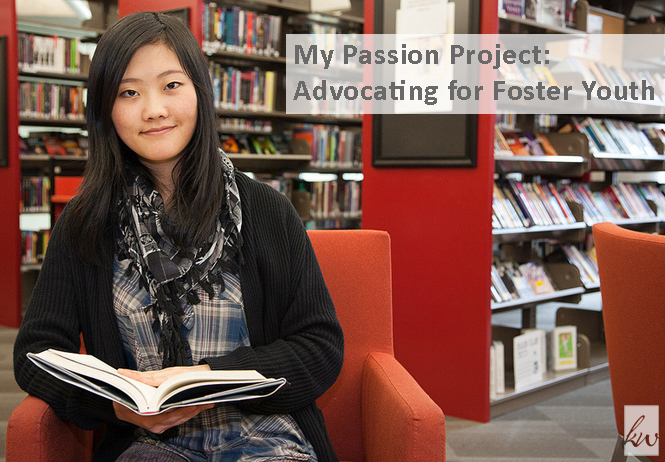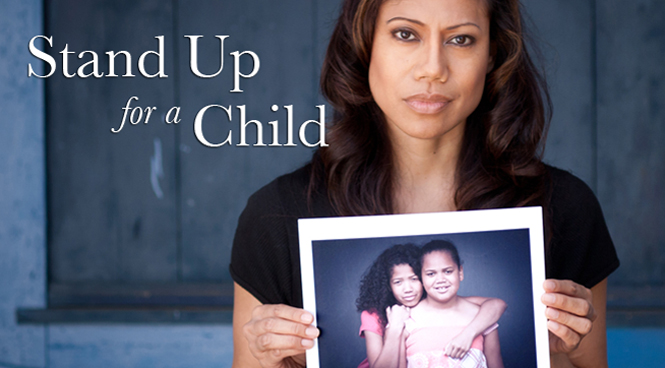In 2011, I became a court-appointed special advocate, or CASA (like house in Spanish), for a teen in foster care. I LOVE it! Being an advocate has been the most rewarding experience I’ve ever had. So, when I heard my cousin describe her own voluntarism exactly the same way, I knew I’d found a new blog feature: passion projects.
What is a passion project?
A passion project is something that makes your heart sing. It’s not about money or prestige or influence, but rather the feeling it brings you to do it. Personally, I think passion projects have to involve a component of service—because I believe it’s impossible to find what makes your heart sing when you’re solely self-focused. But, through this series, each person will define what “passion project” means to them and tell his/her own story.
Your passion project could be a volunteer activity, a job, or a lifelong vocation. The bottom line: A passion project requires significant commitment but it also brings you a tremendous sense of fulfillment. And yes, you could have more than one!

Image created by Vancouver Public Library. Adapted and licensed under Creative Commons.
Also, please note: This is not my advocate youth, nor is this image meant to suggest that the girl pictured is in foster care.
What is a CASA?
A CASA is a volunteer who advocates on behalf of a child in foster care. I always say it’s like Big Brothers Big Sisters, but with more access and accountability. CASAs are expected to review their advocate child’s medical and education records as well as get to know other people involved in the child’s life, including their parents and foster parents, attorney, and teachers. Because we see the child weekly—much more frequently than busy social workers, attorneys, or judges could do so—we help the court understand who the child really is and how best to serve their needs.
Why this matters—and what I want others to know
“On any given day, there are approximately 400,000 children in out-of-home care in the United States. During the last year about 650,000 children spent some time in out-of-home care.” – Children’s Rights
A lot of people seem to think that kids in foster care are there because they did something wrong. Not true! These kids were removed from their family home for their OWN protection.
Being in foster care is not the same as being in juvenile detention. Kids are placed in out-of-home care for a variety of reasons, including parental death or incarceration, abuse or neglect, or a parent’s inability to protect their child from dangerous situations. Kids in care are the same as any other kid; their resilience has just been tested a bit more.
The best way to understand what an advocate is and why one matters is by hearing the stories of some of my local program’s—Child Advocates of Silicon Valley—advocates and graduates:
So why do these kids need support? As a pediatric nurse practitioner and former foster parent shared with our training class, “Pretty much everything about the foster care system leads to developmental delays.” Maltreatment does. Removal from the home does, including the number of placements a child experiences and the age s/he enters care. Foster children also tend to have greater healthcare needs, both physical and mental, due to the trauma they’ve experienced.
No one believes that the ideal place for a child to grow up is out-of-home care; it is simply the best alternative for some kids. To add to that, approximately 26,000 youth age out of care each year; that is, they enter adulthood with little to no support system. The resulting outcomes, as shared by our instructor, are horrifying:
- 65% emancipate to homelessness
- Only 3% go to college
- By age 19, almost half of girls are pregnant
- Within 18 months of emancipating, 27% of males and 10% of females have been incarcerated; 33% receive public assistance; 37% had not finished high school; and 50% are unemployed
And remember: These kids were placed into foster care for their own protection, through no fault of their own.
But there’s good news: There is a lot of evidence that one-to-one mentoring programs significantly help youth. Being a CASA is being a mentor. Foster youth with mentors are:
- More likely to graduate from high school and go on to college
- More likely to get the medical, educational and emotional services they need
- More likely to find a permanent home
- More likely to have a place to stay after they turn 18
- More likely to get involved in extra-curricular activities
- More likely to make healthy life choices
What I do
After you go through the interviews and training process, you’re asked what age group you’d like to advocate for and offered case histories to review. You choose the child whose story most speaks to you. I work solely with teens because that’s the age group I enjoy most.
Once per week, I hang out with my teen for a few hours. We go to the mall, get pedicures, go for walks at the park, visit museums, do art projects, grab lunch, whatever sounds fun that day. We’ve toured colleges together, I’ve taken her to the doctor’s office, and we talk about everything from day-to-day goings-on to career possibilities to boys to her hopes and dreams. I even took her to vote for the first time! It’s a total blast.
And yes, I check in with her social worker and pull her school records and attend court dates, but mostly what I do is befriend and mentor a teen. Kids of all ages are in foster care, from birth to 18+, so whatever age you prefer, there’s a youth for you.
How I became a CASA
One day while visiting family in Florida, I stopped into a Starbucks and saw a CASA recruitment flyer. I looked it up on my phone and was thrilled to find out it is a nationwide program. When I got back home to Northern California, I contacted the local chapters and attended an information session for Santa Clara County. The rest is history!
How you can become a CASA
In order to ensure the safety of youth in care, becoming a child advocate takes some time. But almost anyone can do it! All you need is to:
- Be at least 21 years old
- Be willing to complete necessary background checks, provide references, and participate in an interview
- Complete 30 hours of pre-service training
- Be available for scheduled court appearances, with advance notice
- Be willing to commit to your youth until your first case is closed, seeing him/her weekly or as frequently as s/he is available (if less often)
For more on the requirements and to find a program near you, visit the National CASA website.
Why this is my passion project
For decades now, I’ve known my kids were already out in the world, that I didn’t need to make babies in order to create a family. When I was 16, I begged my mom to adopt a Wednesday’s Child we’d seen on television (her name was Cheyenne, she was 15, and she loved basketball—yeah, I remember it like it was yesterday). Around that same time, I also volunteered as a “Big” for Big Brothers Big Sisters. Later, after college, I served on the board of the Los Angeles Junior Chamber of Commerce, a group of young professionals committed to improving the lives of Los Angeles youth. Seeing a trend yet?
I have volunteered with kids in many ways over the years, but this is without a doubt, the best experience I’ve had. If you’re at all interested in serving as a CASA, check out the National CASA website for information on a program near you.
Cheers,


















40 Things to Do Before 40 » KateWatson.net - […] my involvement with foster and at-risk […]
3 Mental Shifts that Changed My Life » KateWatson.net - […] probably know I’m a volunteer CASA, a court-appointed special advocate for foster children. People often ask me how I do that, how I […]